Manufacturer, Supplier & Exporter of
a wide range of Dyes, Pigments & Food Colours
Disperse Dyes
Before going further let us first understand what are Disperse Dyes?
Disperse dyes are a type of dye that are insoluble in water, but are able to dye polyester and acetate fibers. These dyes belong to the class of non-ionic dyes and are typically present in water in a highly dispersed state. Disperse dyes are specifically effective for dyeing normal polyesters, and some types can also be used for nylon and acetate.
One of the unique properties of disperse dyes is that they have the smallest dye molecules among all types of dyes. This characteristic enables them to penetrate and dye the synthetic fibers that other types of dyes cannot.
Disperse dyes are used in a variety of dyeing applications, such as sublimation printing of synthetic fibers. They are also used as colorants in the manufacturing of “iron-on” transfer crayons and inks. Overall, disperse dyes are an essential tool for colouring synthetic fibers and have become increasingly important in the textile industry.
To find the right disperse dyes for polyester, we invite you to explore one of the best Disperse Dyes Manufacturers in India i.e. Megha International. We offer a diverse collection of best Disperse Dyes for wool and consumables that cater to various requirements. Moreover, we keep pace with the advancements in digital textile printing techniques to ensure that our customers have access to the latest technologies. For detailed information on the product Download Disperse Dyes PDF
Are you looking for Disperse Dyes? Transform your materials into vibrant masterpieces!
Buy High quality Disperse Dyes at Best Price - Megha International

Disperse Dyes Manufacturing Process
The manufacturing process for disperse dyes typically involves several stages:
The first step in the process is the synthesis of the dye intermediate, which is usually done using organic chemistry reactions. This intermediate is then purified to remove any impurities.
The dye intermediate is then subjected to a diazotization reaction, which involves the conversion of an amine group in the molecule to a diazonium salt. This step is necessary for the attachment of the dye to the fiber.
The diazonium salt is then coupled with a coupling component, which is another organic molecule that gives the dye its final colour. The coupling component is chosen based on the desired colour of the final dye.
After coupling, the resulting dye is often purified using methods such as crystallization or chromatography to remove any impurities and ensure high purity.
The purified dye is then formulated into a suitable form for its intended use, such as a powder or liquid.
Finally, the finished product is subjected to rigorous quality control testing to ensure that it meets the necessary specifications and standards.
Types of Disperse Dyes
Some common Disperse Dyes examples include:
| Disperse DYES | General | ||||||||||
| On Polyester 2% | Product Name | C.I. Name | CAS NO. | Levelling | Light 1/1 | Washing | Persipiration | DISPERSE DYES uses | Price | MSDS | TFDS |
| Yellow 4GLN | Yellow 211 | 61901-39-1 | G | 6 | 5 | 5 | Dyeing of polyester and cellulose acetate fibers in textile industry. | ||||
| Orange 3R | Orange 44 | 128-80-3 | G | 5 | 5 | 5 | Used for dyeing polyester fabrics, synthetic fibers, and plastics. | ||||
| Orange RL | Orange 25 | 12220-06-5 | G | 6 | 5 | 5 | Dyeing of polyester and cellulose acetate fibers in textile industry. | ||||
| Yellow Brown 2RC | Orange 30 | 6373-74-6 | G | (6-7) | 5 | 5 | Used for dyeing polyester fabrics, synthetic fibers, and plastics. | ||||
| Red FB | Red 60 | 12223-23-3 | G | (6-7) | (4-5) | 5 | Dyeing of polyester and nylon fibers in textile industry. | ||||
| Pink REL | Red 91 | 12220-07-6 | G | 6 | 5 | 4 | Used for dyeing polyester fabrics, synthetic fibers, and plastics. | ||||
| Red BEL | Red 92 | 61901-40-4 | G | (6-7) | 5 | (4-5) | Dyeing of polyester and nylon fibers in textile industry. | ||||
| Red F3BS | DISPERSE RED 343 | 3567-66-6 | G | 6 | (4-5) | (4-5) | Used for dyeing polyester fabrics, synthetic fibers, and plastics. | ||||
| Violet 3R | DISPERSE VIOLET – 63 | 6408-72-6 | G | (5-6) | 5 | 5 | Dyeing of polyester and cellulose acetate fibers in textile industry. | ||||
| Brown 3RD | Disperse Brown 3 | 71872-19-4 | G | (5-6) | 5 | 5 | Used for dyeing polyester fabrics, synthetic fibers, and plastics. | ||||
| Blue BG | Blue 60 | 12222-04-7 | G | (5-6) | 4 | 5 | Dyeing of polyester and nylon fibers in textile industry. | ||||
| Blue 2RX | Blue 56 | 12222-05-8 | G | (6-7) | 5 | (4-5) | Used for dyeing polyester fabrics, synthetic fibers, and plastics. | ||||
| YELLOW BROWN 2R | C. I. DISPERSE ORANGE – 30 | 4261-62-5 | G | 5 | 5 | 5 | Polyester dyeing, automotive textiles, synthetic fibers | ||||
| SCARLET 3R 150% | C. I. DISPERSE RED – 50 | 2611-82-7 | G | 3 | 3 | 3 | Polyester printing, sportswear, swimwear, flags | ||||
| SCARLET RR | C. I. DISPERSE RED – 54 | 12217-86-6 | G | 1 | 1 | 1 | Polyester dyeing, textiles, plastics | ||||
| BROWN 3REL | C. I. DISPERSE BROWN – 1 | 52623-75-3 | G | 5 | 5 | 5 | Polyester dyeing, home textiles, upholstery | ||||
| PINK REL 200% | C. I. DISPERSE RED – 91 | 12236-10-1 | G | 3 | 3 | 3 | Polyester printing, sportswear, swimwear | ||||
| RED FB 200% | C. I. DISPERSE RED – 60 | 12223-37-9 | G | 3 | 3 | 3 | Polyester dyeing, automotive textiles | ||||
| RED BEL | C. I. DISPERSE RED – 92 | 27767-98-2 | G | 5 | 5 | 5 | Polyester dyeing, home textiles, upholstery | ||||
| RED F3BS 400% | C. I. DISPERSE RED – 343 | 99031-78-6 | G | 1 | 1 | 1 | Polyester dyeing, sportswear, swimwear | ||||
| RED RGL | C. I. DISPERSE RED – 202 | 2872-52-8 | G | 3 | 3 | 3 | Polyester dyeing, textiles, plastics | ||||
| YELLOW FFG 200% | C. I. DISPERSE YELLOW – 124 | 2783-94-0 | G | 5 | 5 | 5 | Polyester printing, sportswear, swimwear, flags | ||||
| YELLOW SGL 200% | C. I. DISPERSE YELLOW – 126 | 83249-52-9 | G | 5 | 5 | 5 | Polyester dyeing, automotive textiles, synthetic fibers | ||||
| YELLOW 10GD 200% | C. I. DISPERSE YELLOW – 114 | 61968-66-9. | G | 3 | 3 | 3 | Polyester dyeing, home textiles, upholstery | ||||
| YELLOW 7GL 200% | C. I. DISPERSE YELLOW – 229 | 136959-03-0 | G | 3 | 3 | 3 | Polyester dyeing, textiles, plastics | ||||
| YELLOW 3G 200% | C. I. DISPERSE YELLOW – 64 | 10319-14-9 | G | 5 | 5 | 5 | Polyester printing, sportswear, swimwear | ||||
| YELLOW 40 200% | C. I. DISPERSE YELLOW – 236 | 4430-18-6 | G | 3 | 3 | 3 | Polyester dyeing, automotive textiles | ||||
| YELLOW 6GLS 600% | C. I. DISPERSE YELLOW – 218 | 83929-90-2 | G | 1 | 1 | 1 | Polyester dyeing, sportswear, swimwear | ||||
| YELLOW C4G 200% | C. I. DISPERSE YELLOW – 211 | 86836-02-4 | G | 5 | 5 | 5 | Polyester dyeing, home textiles, upholstery | ||||
| GOLDEN YELLOW GG 200% | C. I. DISPERSE YELLOW – 56 | 54077-16-6 | G | 3 | 3 | 3 | Polyester dyeing, textiles, plastics | ||||
| ORANGE FRL 200% | C. I. DISPERSE ORANGE – 25 | 31482-56-1 | G | 5 | 5 | 5 | Polyester printing, sportswear, swimwear, flags | ||||
| RED 2B | C. I. DISPERSE RED – 167 | 61968-52-3/26850-12-4 | G | 3 | 3 | 3 | Polyester dyeing, automotive textiles, synthetic fibers | ||||
| RUBINE GFL 200% | C. I. DISPERSE RED – 73 | 16889-10-4 | G | 1 | 1 | 1 | Polyester dyeing, home textiles, upholstery | ||||
| RED VIOLET FBL 200% | C. I. DISPERSE VIOLET – 26 | 6408-72-6 | G | 5 | 5 | 5 | Polyester printing, sportswear, swimwear | ||||
| VIOLET 4R 200% | C. I. DISPERSE VIOLET – 48 | 61968-59-0 | G | 3 | 3 | 3 | Polyester dyeing, automotive textiles | ||||
| VIOLET 3R 200% | C. 1. DISPERSE VIOLET – 63 | 64294-88-8 | G | 1 | 1 | 1 | Polyester dyeing, home textiles, upholstery | ||||
| TURQUOISE BLUE BG 200% | C. I. DISPERSE BLUE – 60 | 12217-80-0 | G | 5 | 5 | 5 | Polyester dyeing, sportswear, swimwear | ||||
| BLUE GSL 400% | C. I. DISPERSE BLUE – 165 | 41642-51-7 | G | 3 | 3 | 3 | Polyester printing, textiles, plastics | ||||
| BLUE GL | C. I. DISPERSE BLUE – 26 | 3860-63-7 | G | 3 | 3 | 3 | Polyester dyeing, automotive textiles | ||||
| BLUE 2RX | C. I. DISPERSE BLUE – 56 | 12217-79-7 | G | 1 | 1 | 1 | Polyester dyeing, home textiles, upholstery | ||||
| BLUE SE 2RI 200% | C. I. DISPERSE BLUE- 183 | 2309-94-6 | G | 5 | 5 | 5 | Polyester printing, sportswear, swimwear, flags | ||||
| NAVY BLUE 8GG | C. I. DISPERSE BLUE – 291 | 56548-64-2 | G | 3 | 3 | 3 | Polyester dyeing, automotive textiles, synthetic fibers | ||||
| NAVY BLUE 3GD 200% | C. I. DISPERSE BLUE – 79 | 21429-43-6 | G | 3 | 3 | 3 | Polyester dyeing, textiles, plastics | ||||
To know more in details about the classification of Reactive Dyes
Disperse Dye Properties / Characteristics - Disperse Dyes Manufacturer in India
Disperse Dyes for cotton possess a number of distinct properties and characteristics that make them well-suited for various dyeing applications. These properties of Disperse Dyes include:
- Insolubility in water: Disperse dyes are water-insoluble and are mainly present in water in a highly dispersed state. This characteristic enables them to dye synthetic fibers that are also water-insoluble, such as polyester and acetate.
- Small molecule size: Disperse dyes have the smallest dye molecules among all types of dyes. This characteristic allows them to penetrate and dye the synthetic fibers that other types of dyes cannot.
- Resistance to washing and light: Disperse dyes are highly resistant to washing and light, which makes them ideal for use in textiles and other applications that require colourfastness.
- Compatibility with synthetic fibers: Disperse dyes are specifically effective for dyeing synthetic fibers, including normal polyesters, some types of nylon, and acetate.
- Limited range of colours: Disperse dyes have a limited range of colours compared to other types of dyes. However, they are still an essential tool for colouring synthetic fibers.
Overall, disperse dyes have unique properties that make them essential for dyeing synthetic fibers, despite their limited range of colours.

Advantages of Disperse Dyes
There are several advantages of using disperse dyes for dyeing synthetic fibers:
- Ability to dye water-insoluble fibers: Disperse dyes are the only type of dye that can effectively dye water-insoluble fibers such as polyester and acetate. This makes them essential for dyeing synthetic fabrics.
- High colourfastness: Disperse dyes have excellent resistance to washing and light, which means they are highly durable and maintain their colour over time.
- Compatibility with synthetic fibers: Disperse dyes are specifically designed to work with synthetic fibers such as polyester, nylon, and acetate. This means that they can produce vibrant, long-lasting colours on these materials.
- Small molecular size: Disperse dyes have small molecular sizes, which allows them to penetrate and dye synthetic fibers deeply. This results in vibrant, saturated colours that are resistant to fading.
- Versatility: Disperse dyes can be used for a range of applications, including sublimation printing, transfer crayons, and inks. This versatility makes them a valuable tool for a variety of industries.
Overall, the advantages of disperse dyes make them a popular choice for dyeing synthetic fibers, and they have become an essential component of the textile industry.
Application of Disperse Dyes
Disperse dyes have a wide range of applications in various industries, including textile, cosmetics, plastic colouring. Some of the important disperse dyes uses include:
- Dyeing of synthetic fabrics: Disperse dyes are primarily used for dyeing synthetic fabrics such as polyester, nylon, and acetate. They are effective at penetrating the fibers and producing bright, long-lasting colours.
- Sublimation printing: Disperse dyes are also used in sublimation printing, which involves transferring the dye onto a substrate by applying heat and pressure. Disperse dyes heat transfer printing is commonly used for printing on synthetic fabrics, as well as for producing custom mugs, phone cases, and other promotional items.
- Transfer crayons and inks: Disperse dyes can be used in the manufacture of “iron-on” transfer crayons and inks. These products are commonly used for transferring designs onto fabrics and other materials.
- Plastic colouring: Disperse dyes can be used for colouring plastic materials such as polypropylene, PVC, and polystyrene. This is particularly useful for creating coloured packaging and other plastic products.
- Cosmetics: Some disperse dyes are used in the production of cosmetics, particularly hair dyes.
Overall, the versatile applications of disperse dyes make them an essential component of various industries, including textiles, printing, and cosmetics.
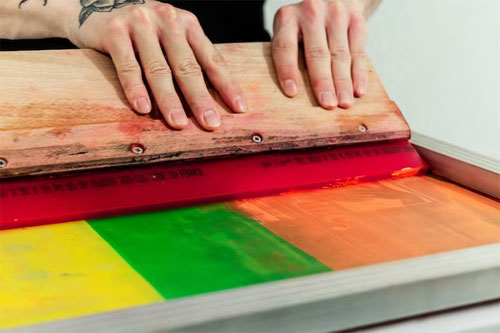
Textile Colouring
Reactive dyes for cotton and other natural fibers are widely utilized in the textile industry for their colouring properties on fabrics such as cotton, wool, silk, and others. They are also used to dye synthetic fibers such as polyester, nylon, and acrylic.
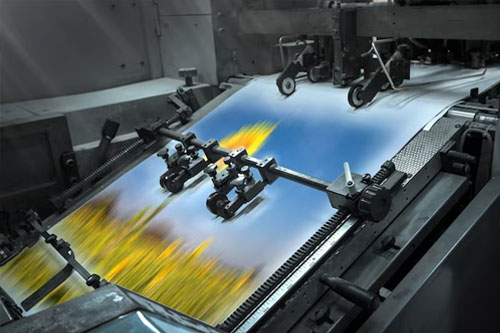
Printing
Reactive dyes can be used to print designs on fabrics using different printing techniques such as screen printing, roller printing, and inkjet printing.
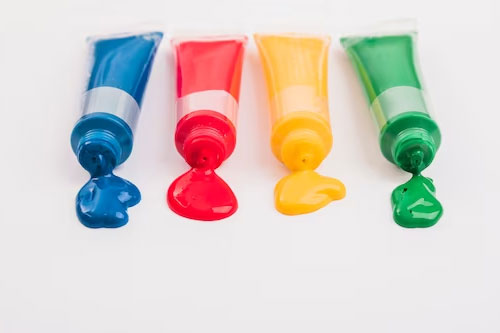
Paper Colouring
Reactive dyes are also used to colour paper and paper products. They are used in the production of paper for books, magazines, and other printed materials.
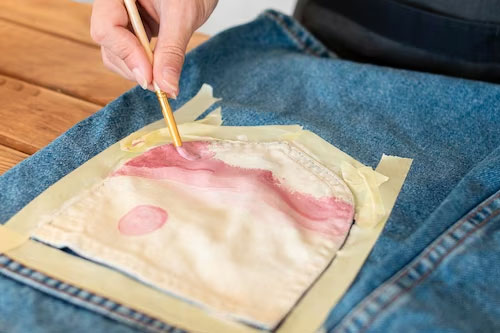
Leather Colouring
Reactive dyes are used to colour leather and leather products such as shoes, bags, and belts.
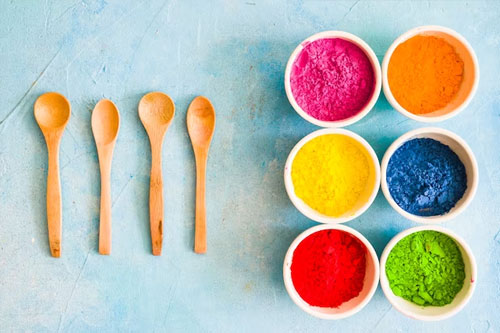
Food Colouring
Some reactive dyes are also used as food colouring agents, although their use in food is highly regulated and limited.
Overall, reactive dyes are versatile and widely used in various industries for their excellent colour fastness and durability.
About Megha International
Looking for a Disperse Dyes Exporter for brazil?
Megha International (ISO 9001: 2008) Established in the year 1995, at Mumbai, is the best Disperse Dyes manufacturers in India that offers an extensive range of dyes in national as well as international markets. Our research and development team carries out constant studies to develop products that reliably set us apart from our competitors and serve our clienteles best. With a remarkable focus on innovation and leveraging new-age expertise, we endeavour to sustain and develop a leading organization on a global scale. The company is among the top disperse dyes manufacturers in Mumbai, and is striving to deliver the finest quality of products to the consumers, while being environmentally sensitive.
Market Area of Megha International
As a prominent Disperse Dyes supplier, Megha International is proud to export Disperse Dyes in a wide range of countries across the globe. Our reach extends to many countries in Asia, including China, Vietnam, Singapore, Thailand, Malaysia, Korea, Philippines, Japan, and Indonesia.
We also serve clients in the Middle East, such as UAE, Saudi Arabia, Kuwait, Qatar, Iraq, and Iran.
In North Africa, we have clients in Algeria, Morocco, and Tunisia, while in Europe, we offer our services to Russia, the UK, France, Italy, Germany, the Netherlands, Romania, and Poland.
In South America, we serve clients in Brazil, Argentina, Colombia, Peru, and Guatemala, as well as in Central America, including Mexico, Costa Rica, and Honduras.
Finally, we also provide our services to clients in the United States and Chile. No matter where our clients are located, we are committed to delivering high-quality dyes and exceptional customer service.
Frequently Asked Question about Vat Dyes
Disperse dyes are mainly used for dyeing synthetic fibers, particularly water-insoluble ones such as polyester and acetate. They are also used for sublimation printing and plastic colouring.
Disperse dyes are typically used in a bath with a dispersing agent and heated to a specific temperature for a set amount of time. The fabric should be pre-washed and then immersed in the dye bath, agitated, and rinsed.
Disperse dyes are generally considered safe for use in textiles, printing, and cosmetics. However, proper handling and protective gear should be used as with any chemical.
A: Disperse dyes are designed for use on synthetic fibers and are not effective on natural fibers such as cotton or wool.
The choice of disperse dye depends on the specific fiber and colour desired. Consult the manufacturer’s guidelines or a colour chart to select the appropriate dye.
Disperse dyes can be purchased from textile dye suppliers such as Megha International.
Disperse dyes are unique in that they are water-insoluble and specifically designed for dyeing synthetic fibers.
The dyeing process can take anywhere from 30 minutes to several hours, depending on the dye, temperature, and desired colour intensity.
The cost of disperse dyes varies depending on the brand, colour, and quantity purchased.
Disperse dyes are not typically used for tie-dyeing as they require high heat and pressure for effective penetration. Tie-dyeing is better suited for fiber-reactive dyes or other types of dyes designed for natural fibers.
